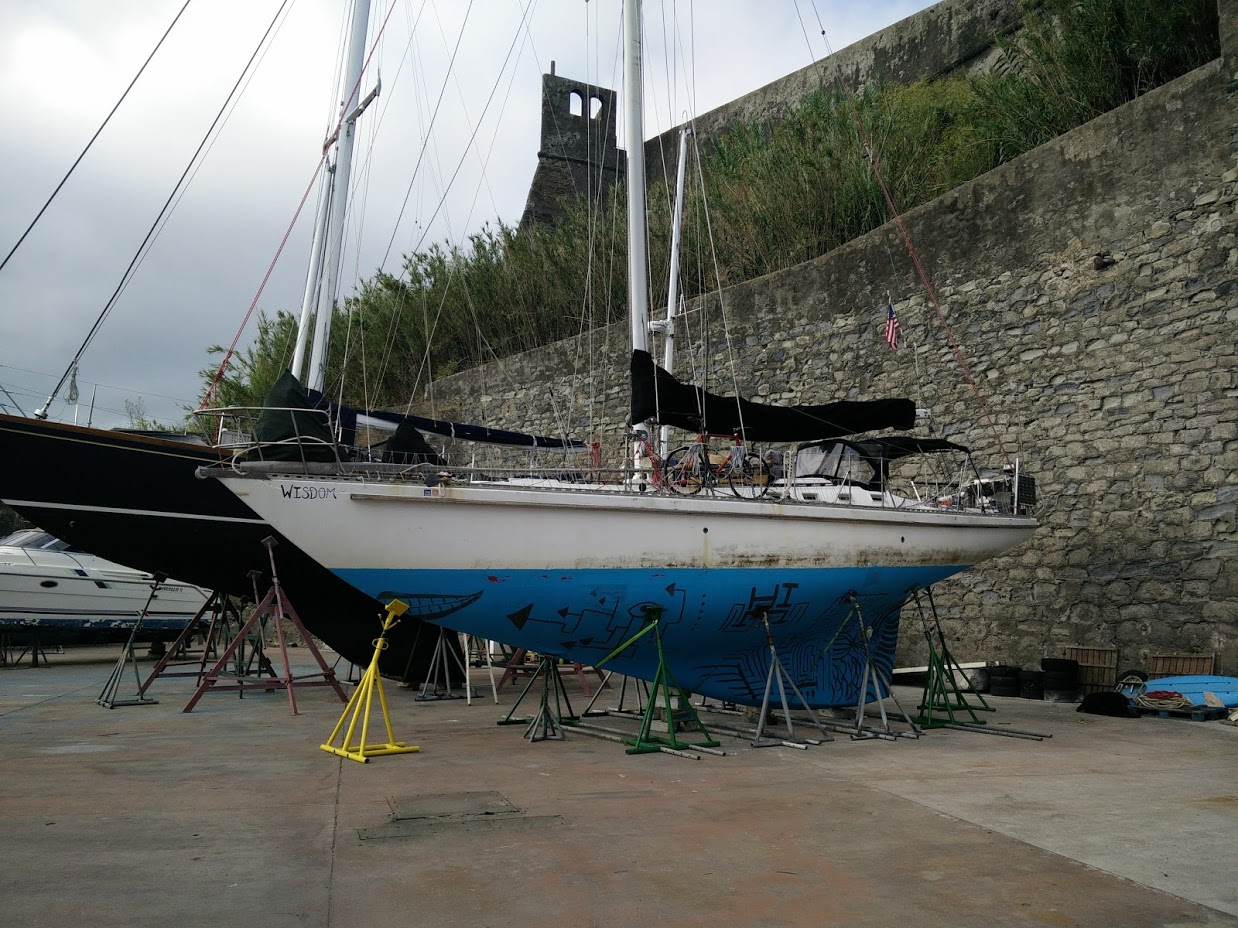If you read the instructions on your paint tins, Interlux recommends painting white primer if you are going to paint white for the final color; grey primer if you are going to paint any darker color.
Five years ago, when I painted the deck, I followed the instructions and had the hardest time telling where I had painted and where I hadn’t yet. This time around, I’m making my life easier and breaking the instructional rules!
GREY PRIMER!!
I painted the whole deck with a 2 inch chip brush that I bought in a value pack at Home Depot while were still in the states. I started using it for edging and then began filling in the areas between the edges. In no time, I was painting the whole thing with this tiny brush.
The dark grey paint really does pick up the heat. In no time the inside of our home went from rather cool to very warm. I can only imagine what it’s like to have a dark deck on a tropical summer day!











